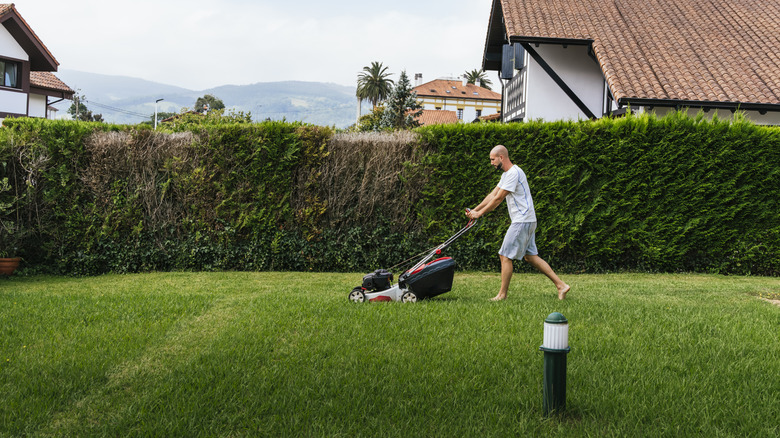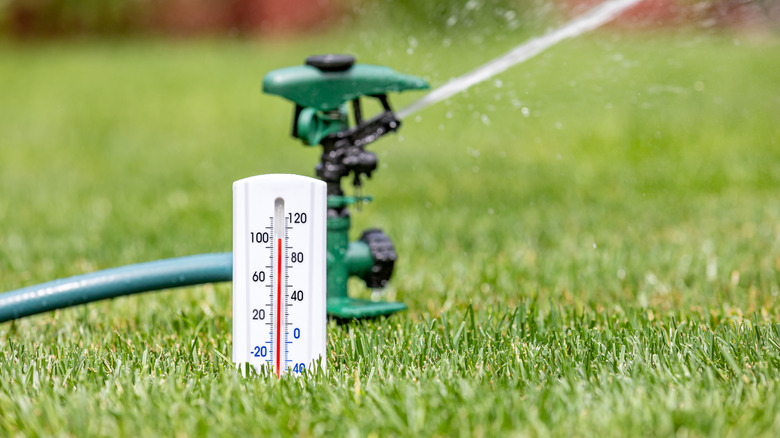The Best Length To Cut Grass For A Greater Chance Of Surviving The Heat
When temperatures rise, our energy wanes, so let's be honest, doing anything outside — especially maintaining the yard — may be the last thing you want to do. Some people forgo watering their lawn during the summer, allowing it to turn brown. Lawns can bounce back from this but will likely be more susceptible to weeds in the meantime. Letting the grass go dormant during the summer will also mean more care on your part in the fall to return it to a healthy state. So if you want to keep your lawn healthy during a heat wave or excessively high summer temperatures, set the height on your lawn mower to cut the grass at 3 to 3.5 inches — about an inch or so higher than other times of year.
This is essential for a number of reasons. Grass, like many plants, use photosynthesis to grow and survive. When its blades are longer, the grass has more area to soak in sunlight, increasing its ability to produce food and stay healthy. A taller lawn also shades the soil better than a shorter lawn, preventing the soil from drying out too quickly and weakening the root system of the grass. Keep in mind that regardless of the time of year or height setting, you should never mow more than one-third of the blade's length. This could drastically affect the lawn's ability to photosynthesize.
Additional tips for keeping your lawn thriving in the heat
If your area tends to experience frequent heat waves during the summer, you can prepare for this by gradually increasing the height of your lawn from late spring through mid-summer. This will trigger the development of stronger and deeper roots in preparation for the pending drought and high temperatures. Another benefit of keeping the grass long in the summer is that the blades will prevent more weed seeds from reaching the soil and taking hold. If your grass clippings are dry and no more than an inch long, consider reusing them for a greener lawn. Not only does this reduce cleanup for you, the clippings will add extra nutrients to the grass.
Maintaining a lawn during a heat wave also requires proper irrigation. For starters, water early in the morning so that the water doesn't evaporate too quickly during peak sun hours. Aim to give the lawn about 1 to 1.5 inches of water each week. Not sure how much that is? Put an empty container on the lawn beneath the spray of the sprinklers, and see how full the container is after one watering. Remember that different types of grass may have varying watering needs. After you've watered the lawn, wait at least four hours before mowing, keeping in mind the potential dangers to mowing wet grass. Giving your lawn a chance to dry first will likely give you a cleaner and more uniform cut.

